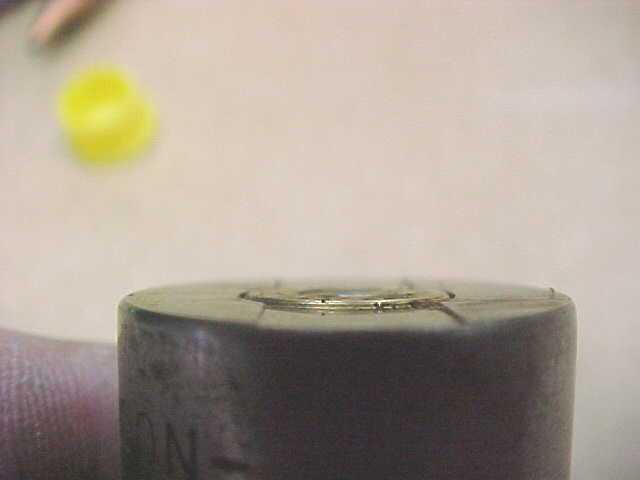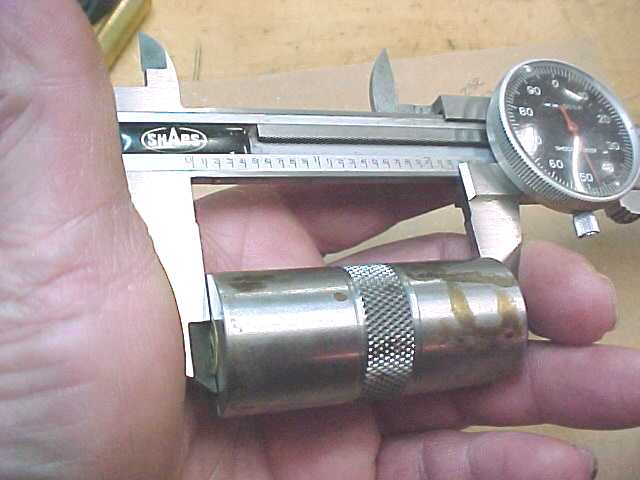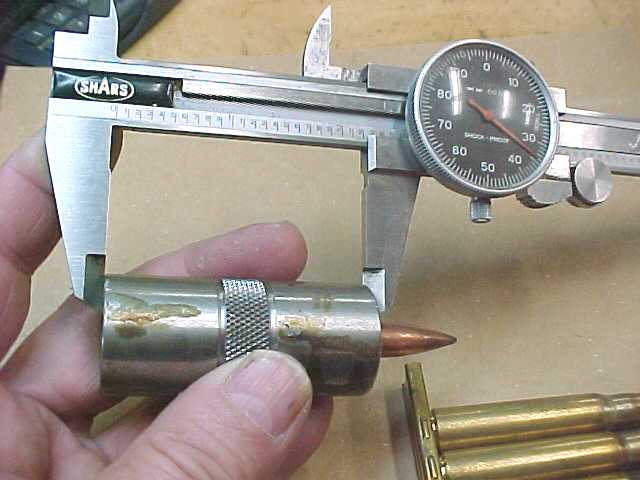
IF YOU REACHED THIS PAGE VIA A SEARCH ENGINE
THIS WILL TAKE YOU TO OUR HOME PAGETHIS WILL TAKE YOU TO PAGE ONE
Measuring ABSOLUTE Headspace
Page 2
While the Glas is setting up, think about this. The dimensions of some common 8x57 gauges are:
GO - 1.8743 inch
NOGO - 1.8803 inch
FIELD - 1.8843 inch
(From "Sgt Art" On the Turk Forum - "My Forster 8mm field gauge
measures 1.9050' according to the etching on it. It's 20 degree 48 minute chamber style." )
Note that there is 0.006 inches between the GO and NOGO, and 0.004 between the NOGO and FIELD, for at total of 10 thousandths between the GO and FIELD. Most new ammo is the same dimension as the GO, and if fired in a chamber that just matches the FIELD, will experience 10 thousandths of "stretching" (ignoring action flex and compression). (The field gauge from "Sgt Art" is way more liberal)
OK, the Glas has set-up and we can use our gauge.

Remove any protruding threads from the head of the split case, but be careful not to remove any brass. Insert the bore brush into the case as shown. Now, with the extractor removed, chamber the gauge, closing the bolt carefully.

Remove the collapsible gauge from the rifle and carefully insert it into the case gauge. This is one from a Turk that closed on a NOGO gauge.

Measuring from the bottom of the case gauge to the head of the headspace gauge gives a reading of 2.247 inches.

Measuring an unfired Turk round gives us 2.234 inches. (Measuring a GO gage resulted in a 2.233 inch reading. You can use any standard gauge, or some unfired ammo to make length comparisons.) This means that, if fired in the chamber measured, the ammo shown will stretch 13 thousandths. Is this too much ?????-Remember, ten thousandths seems OK.
When using the gauge, make the measurements three or four times. Use an "unscrewing" motion to reset the gauge. The bottom of the Wilson case gauge allows the mouth of the case to project, (that is why we trimmed the mouth of the collapsible headspace gauge) and allows loaded ammo to be gauged. It also has a "trough" on the bottom and thatís to specify max-min case mouth length. When making headspace measurements, make sure the dial caliper is NOT resting on the case mouth, and always use the bottom of the gauge OR the bottom of the trench, it doesn't matter, just use the same one for all measurements.